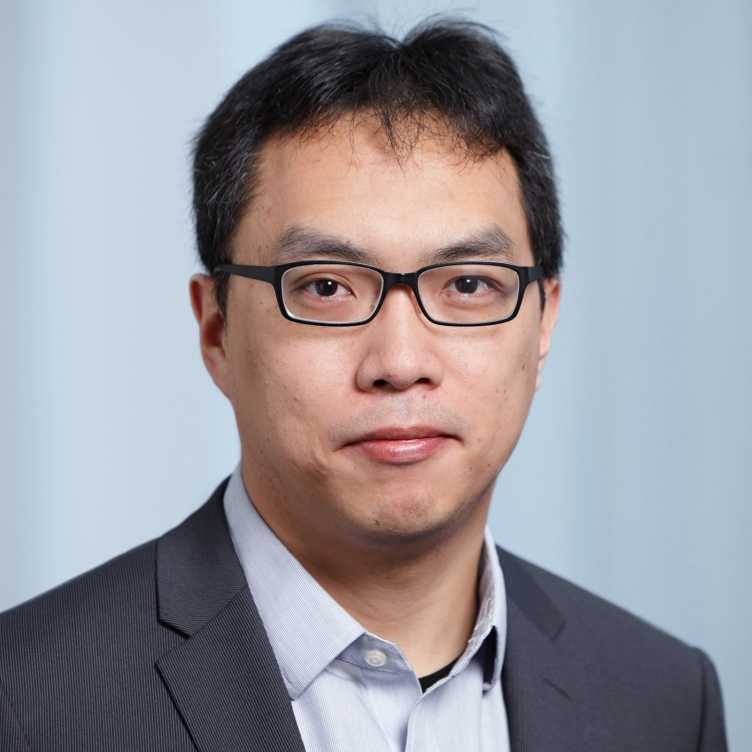Four researchers from ETH Zurich have successfully applied for Consolidator Grants funded by the Swiss National Science Foundation.

Last autumn, the Swiss National Science Foundation (SNSF) put out a call for proposals for its SNSF Consolidator Grants. The successful applications have now been selected. Four out of 22 candidates from ETH Zurich have received funding, bringing in a total of CHF 7.4 million for ETH Zurich. Across Switzerland, the SNSF awarded 19 SNSF Consolidator Grants to researchers from nine institutions.
The ETH projects at a glance:

Alexander Barnes is Professor of Solid State Nuclear Magnetic Resonance (NMR) Spectroscopy. He will use his Consolidator Grant to further develop high-field NMR. He will build an instrument that uses very strong magnetic fields and a phenomenon called microwave induced dynamic nuclear polarization to produce high-resolution images of the structure of molecules in their natural environment. To achieve this, he will have to develop the world’s strongest and most compact magnets. The technology can be used, for example, to examine the structure of molecules in biological cells (crucial to the development of new drugs) or that of chemical catalysts.

ETH Zurich professor Peter Hintz focuses on mathematical methods in physics. In his Consolidator project, he will further develop mathematical tools for constructing solutions to equations known as hyperbolic partial differential equations. These can also be used to analyse Albert Einstein's field equations which form the centerpiece of his general theory of relativity. Among other things, the new methods aim to contribute to a better understanding of black holes and the propagation of gravitational and electromagnetic waves in their vicinity.

Loïc Pellissier is Professor of Ecosystems and Landscape Evolution. He investigates the impact of geological processes such as erosion, volcanism and tectonics on biodiversity. These processes alter the Earth's surface, thereby increasing the diversity of animal and plant habitats or causing habitat fragmentation. With his Consolidator Grant, Pellissier intends to test the hypothesis that tectonics (the movement of the Earth's plates) is the main driver for the emergence of new animal and plant species. To do this, he will develop new methods to collect DNA originating from living organisms in environmental samples. He will use these methods in regions of Central and South America with different tectonic activity to record the diversity of species living there and reconstruct their evolutionary lineage.

Chih-Jen Shih, Professor of Technical Chemistry, has in recent years developed molecular-beam holographic lithography, which has been patented by ETH Zurich. He wishes to use this technology to develop LEDs with a pixel size of less than 100 nanometres. This is 50 times smaller than is possible with existing organic light-emitting diodes (OLEDs). The miniature LEDs can be used to construct high-resolution displays, for example for near-eye applications such as spectacles. Other potential applications include biomedical imaging and microscopy, as well as high-resolution photolithography for semiconductor chip manufacturing. The new light sources are smaller than the wavelength of visible light. This enables electroluminescent metamaterials to generate specially polarised light for optical data transmission.
SNSF suspends calls for proposals
These were the last SNSF Consolidator Grants to be awarded for the time being. There will be no further calls for proposals from the SNSF in 2024. Instead, researchers in Switzerland canonce again be able to participate directly in ERC calls.
The SNSF grants were an interim measure to compensate for the loss of prestigious ERC grants, which were suspended after negotiations on a framework agreement between Switzerland and the EU broke down in 2021. The EU then classified Switzerland as a non-associated third country, which meant that Swiss researchers could no longer apply for ERC grants.
To compensate for this disadvantage, the Swiss National Science Foundation stepped in on behalf of the Federal Council and announced SNSF grants, similar to those provided by the ERC.
New negotiations give hope
In March 2024, the EU and Switzerland resumed negotiations. The EU has introduced a transitional arrangement that allows researchers in Switzerland to take part in this year’s call for ERC 2024 Advanced Grants for established researchers, as well as ERC 2025 Starting, Consolidator and Synergy Grants. This access will be prolonged until the end of 2025 and extended to other ERC grants and other calls within Horizon Europe. As Switzerland is not yet associated with Horizon Europe, it currently has to bear its own share of the project costs and provide funding separately. Researchers from fully associated countries are funded through the joint EU research pot.
However, the agreement with researchers in Switzerland will not be finalised until an association agreement has been concluded between Switzerland and the EU.
Christian Wolfrum, Vice President for Research at ETH Zurich, is pleased that the EU is accommodating Switzerland in terms of research funding: “It is a ray of hope that our researchers will be ableto participate alongside European competitors. However, this is only an intermediate step on the road to Switzerland’s full association with the EU, giving us full access to European research programmes”.
Comments
No comments yet